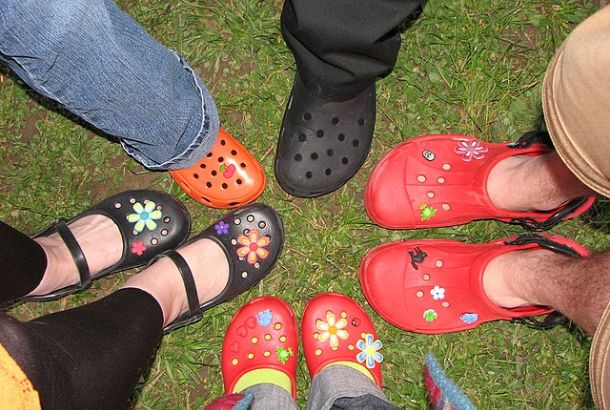To leather or not to leather?

In the light of environmental awareness, everyone is switching their leather Docs to the vegan equivalent. Fake leather is supposedly not only cheaper but also eco-friendly: but is it really? Is the mass-production of leather-like fabric more sustainable in the long run?
The very point of vegan leather is to make it look and feel as close to real leather as possible. Most commonly the leather you see in the fast-fashion shops is made from two different plastic polymers: PU (polyurethane) or PVC (polyvinyl chloride). They differ in structure – if your piece of clothing is thick, consists of multiple layers and is not very wrinkly, it’s most likely made from PVC. If it’s thin and feels plastic-like, it’s probably PU.
It is more common for clothing producers to use PVC than PU, because it doesn’t create as much pollution, but both of these polymers still have an impact on the environment. As you have probably experienced, the cheap artificial leather can be sticky in your hands and have a strong odour. On top of that, if you choose to wear it to the nightclub, you’ll probably be sweating after three and a half minutes of dancing. Clothes made from this material usually don’t last very long and need to be replaced soon after their initial purchase.

It is easy to assume that real leather is not environmentally sustainable. Each year billions of animals are killed in the leather production process, but it includes animals that are primarily used for meat production, such as cows, pigs, goats and sheep. Therefore, in most cases, leather is just a byproduct of meat production. If we want to save animals, meat production should go in line with leather production. Just stopping the use of real leather will not prevent the killing of these creatures but will only lead to more animal waste.
However, more exotic animals, such as alligators and snakes, are often killed just for their skin, not their meat. In this case, it would be much more beneficial for the environment to abandon the production of real exotic leather completely. Even though the industry is deemed cruel, real leather is still known for its durability. Good quality leather ages well and even if you wear it a lot, it doesn’t look cheap; it adapts a new, ‘worn’ look. Moreover, once purchased it can last for years. A leather coat can be passed from generation to generation and still remain chic.
Initially, leather alternatives were not created to support veganism, but to save money on products of everyday wear. When artificial leather was introduced in the late 19th century, it was made from paper products, but now, a century later, it is mostly plastic-based.
Moreover, while all vegan leather is artificial, but not all artificial leathers are vegan. Your faux leather can still contain animal products or byproducts unless it’s marked as 100% synthetic.
However, one must acknowledge that it is, at the end of the day, plastic. And as we all know, most plastic waste takes hundreds of years to break down and will inevitably end up polluting the environment. Making a vegan purchase does not necessarily mean it’s an environmentally-friendly one.

Still, technology is getting better by the day and alternatives to plastic leather have been found. It can also be made from plants and more natural resources, such as grape skin, pineapple leaves, cactus leaves, and apple peels. These alternatives are still new to the industry, but some recognisable brands like H&M and Hugo Boss are prizing themselves for being precursors of the new eco-friendly alternative. This leather imitation is managed differently depending on the kind, but all of them are described as ‘100% organic’, and ‘zero waste’.
However, although these alternatives are making a step towards improving the environment, they still rely on chemical processing in order to give them proper flexibility and a leather-like feel.
What should you do? It seems like choosing plastic leather will not necessarily save animals in the long run as the pollution from plastic products could seriously hinder their natural habitats. All in all, it seems that it’s not all black and white when it comes to leather. Your best bet is to buy second-hand before you buy new and, ultimately, drastically reduce your fashion purchases and ‘shop your closet’.







